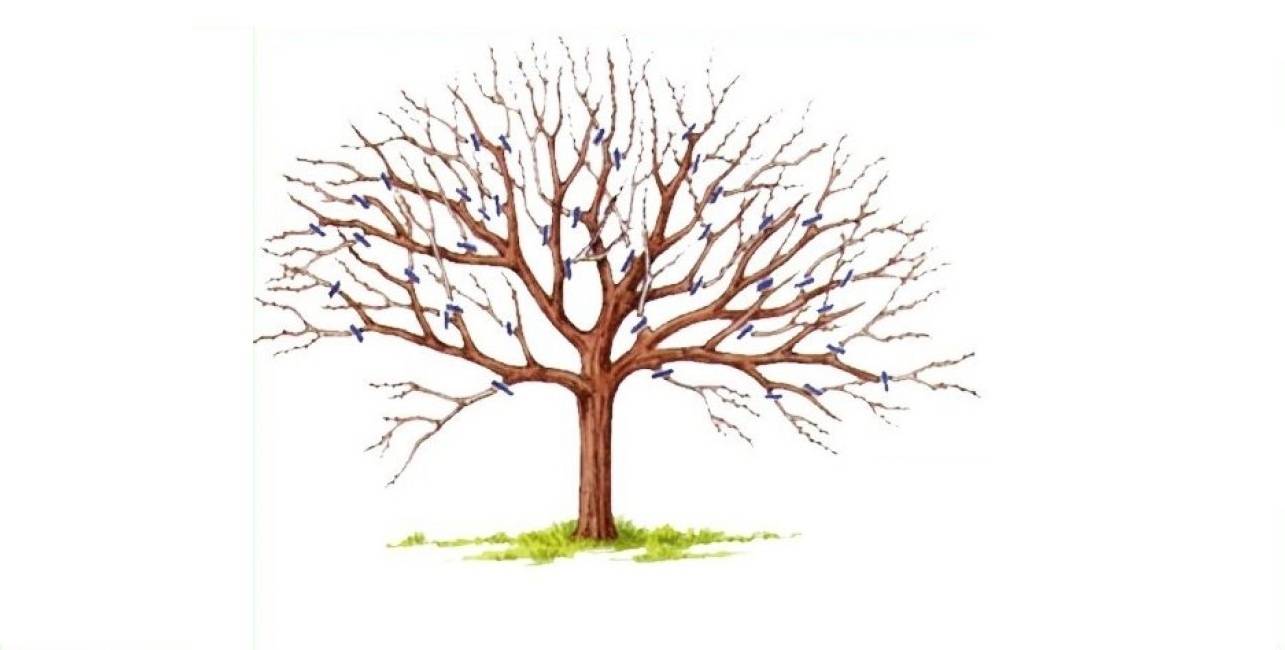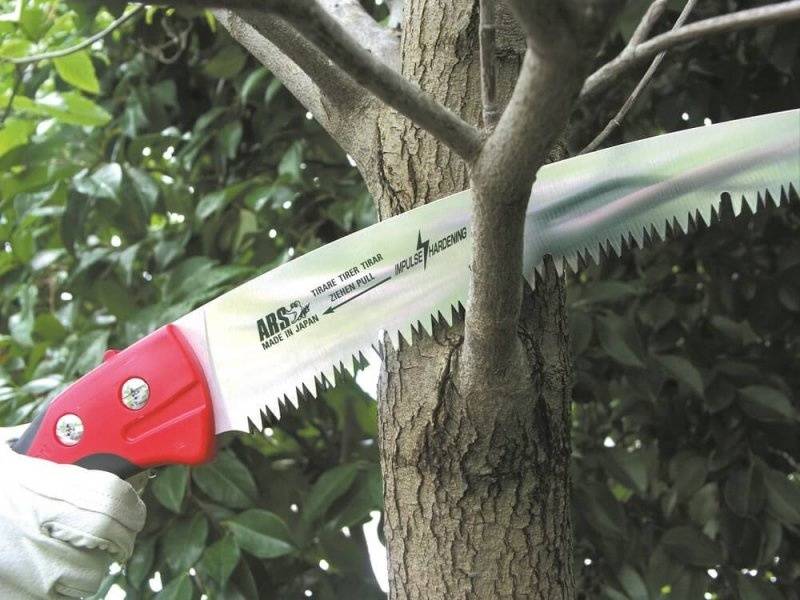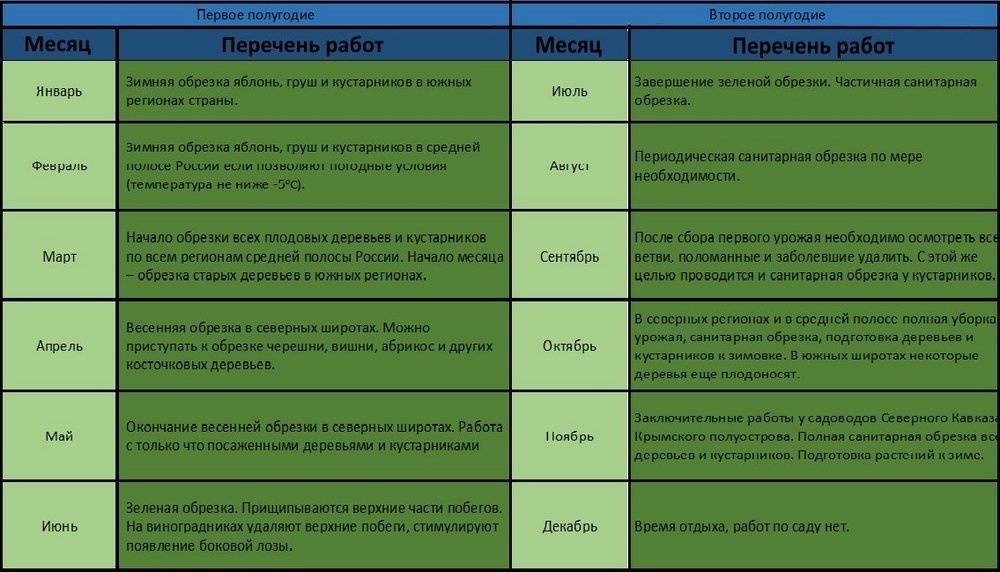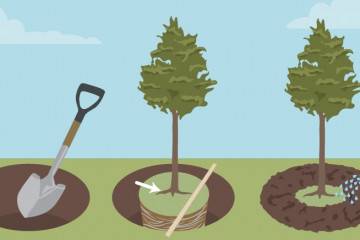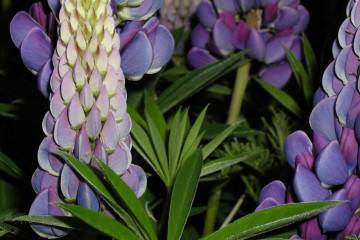When to cut trees and how to cover up cuts on fruit trees
Content:
- Effect of pruning on the condition and fruiting of the tree
- How to properly prune fruit trees: safety precautions
- Pruning large branches on old fruit trees
- Correct pruning techniques for fruit trees: pruning and cutting technology
- Crown formation scheme
- Timing of pruning fruit trees
- How to cover up cuts on fruit trees
- Furrowing of fruit trees
If you wonder when tree pruning is done, it would seem that it can be done at any time of the year. But in fact, it turns out that in winter it is cold, in summer everything blooms and ripens, in spring it begins to come to life and bloom. Only autumn remains. At the same time, the thinning procedure for many tree species is best done twice a year. Thus, the purpose of this article is to answer the question of when to prune trees in order to maximize the fruiting rates of your garden.
Effect of pruning on the condition and fruiting of the tree
At first glance, a simple, but correct and systematic pruning procedure brings a lot of useful things to trees. In particular:
- the correct crown is formed;
- plant growth and fruiting is regulated;
- the quality of the fruit increases;
- diseased and dry branches are removed;
- a tree trunk is being formed that can withstand high yields, diseases and frosts.
Rules for the formation and pruning of the crown of fruit trees
Novice gardeners need to distinguish between thinning and shortening. Shortening can be of the following types:
- weak shortening is the removal of 1 / 5-1 / 4 of the annual shoot;
- average - 1/2 shoot is removed;
- strong pruning - up to 2/3 parts of the annual shoot;
- if you cut the branches of 2 and 3 years of age, this is already rejuvenation;
- 4-6 year old branches - moderate rejuvenation;
- if fruiting branches (skeletal) are removed, this is a detailed pruning.
Thinning is the procedure for completely removing individual shoots and branches along the entire perimeter of a tree.
In both cases, there is a redistribution of water, light and nutrients in the plant. The cut off shoots begin to thicken, more nutrition goes to the buds, the fruits spend more time in the sun, and the yield increases.
How to properly prune fruit trees: safety precautions
To do everything well, you need to use a sharp instrument. It would seem paradoxical, but most injuries during work occur due to the use of a blunt and poorly prepared tool:
- A stepladder should be used, not a ladder. The crown and branches of trees are much weaker than the wall to which such a ladder is attached.
- It is necessary to cut the shoots with a firm grip on the trunk or a powerful branch. The hand must control the fall of the sawn branches.
- It is worth remembering that if you have to reach out or lift your legs off the ground, then you need to attract an assistant who can hedge.
Pruning large branches on old fruit trees
Over time, fruit trees begin to age and the garden needs to be rejuvenated with both new seedlings and global pruning of existing trees. Serious tree formation should begin when they have few underyearlings. This is the first call that the time has come to restore them.
The reshaping of the crown begins with the complete removal of large branches to the growth sites of powerful young shoots, which should be from 2-3 years old. If this has not borne fruit, and, for example, the apple tree has not stopped aging, then you should continue cutting down the old branches.
Correct pruning techniques for fruit trees: pruning and cutting technology
As already noted, two methods of renewing fruit trees are used: pruning and cutting.
Pruning is used to:
- changes in the direction of growth of branches;
- reduction of crown or branching;
- enhancing the growth of new shoots;
- restoration of damaged shoots.
If the tree is highly branched, pruning will significantly thin out its crown. When there are few or weak kidneys, this method will increase and strengthen them. The cut must be made over the new kidneys, at a distance of at least 2 mm. Thin branches are cut with a pruner or sharp knife at a 45 degree angle to the base of the branch. Thick (3 cm or more) branches are cut with a saw at an angle of 30 degrees to their base. Cuts at this angle orient the shoots in the opposite direction. By pruning, you can correctly orient the growing branches in the chosen direction.
Cutting is carried out for:
- crown dilution;
- improving the penetration of sunlight into the crown;
- cleansing the tree from old and diseased branches.
Branches that grow at a slight angle to the trunk (less than 30 degrees) form an influx around it. Pruning should be done with a saw along this ridge. Small branches are cut with secateurs.
If there is no influx near the trunk, then the removal is carried out in this way: at a distance of about 30 cm, a lower cut is made to the center of the branch, and after 15 cm towards the trunk, an upper incision is made. After the twig breaks off, cut the stump in the right place.
It must be remembered that when performing the first or second procedure, you should take care of the bark and not damage it.
Crown formation scheme
There are quite a few schemes for the formation of crowns of fruit trees. Of these, four of the most common can be distinguished:
- Tiered.
- Fusiform.
- Cup-shaped
- In the form of a vertical palmette.
Of the four above-mentioned schemes, tiered is the most commonly used. This is due to the natural beauty of the tree's formation. According to this scheme, the crown is cut into several conditional tiers. The upper, middle and lower tier of branches can be clearly distinguished. The advantages of this method include the prolongation of the fruiting of the tree, as well as an increase in yield.
Fusiform formation can be attributed to the simplest. It starts from the first year of plant growth. The center conductor and lateral branches are initially trimmed. About 3-5 lateral processes are left at a distance of at least 50 cm from the ground. The next year, the procedure is repeated with respect to the height of the central trunk cut in the first year.
The cup-shaped crown begins to be made around the second year. In autumn, almost all branches are cut, it is necessary to leave 4-5 pieces of the strongest.The next year, the central trunk and several competing processes are removed. All others are pruned by 15 cm. The third year - shoots are removed from the center. The build-up of small shoots begins. For this, the branches are shortened before a new shoot emerges. In all subsequent years, the formed crown is maintained.
The formation of palmette is carried out in this way: a seedling is planted without branches (only the central conductor), after which it is cut to a height of up to 70 cm from the ground. The remaining buds sprout from the trunk and are given direction as they grow. Typically, the classic scion angles are 45 and 90 degrees. The central shoot extends along the pole perpendicular to the ground. In subsequent years, similar procedures for pruning and thinning shoots are carried out.
Timing of pruning fruit trees
And finally, the answer to the most important question is when can you prune fruit trees? There is no definite answer here. For each type of tree, there is a calendar for performing a particular pruning procedure. If the question is when it is better to prune trees - in autumn or spring, then specialists have an unequivocal answer - in spring, and even better in winter, of course, if we are talking about the Moscow region or similar places. Siberia is characterized by a later period of garden maintenance. It could be March or even May.
The main requirement for pruning trees is to find them at rest. Therefore, it is often performed after the departure of severe frosts. Therefore, the optimal time is February-March. The first step is to cut off fruit-bearing trees, and secondly, young seedlings. At the beginning there are pears and apple trees, and then all stone fruits. This is due to the fact that there is a risk of frost return, which can destroy the kidneys.
Pruning fruit trees in autumn
In the fall, most of the garden cleaning is carried out. This removes broken, diseased and dry branches. It is possible to carry out a small cleaning of freshly planted seedlings. Small shoots are cut off, the crown is slightly thinned. For more serious and deep pruning, spring is the best choice.
How to cover up cuts on fruit trees
Regardless of whether the wound on the wood is formed by a person or other bad weather, it needs proper treatment. It should be noted right away that it is necessary to cover up the wounds after several days so that the injury site has time to dry out.
The most common treatment for tree wounds is tree var. It is based on the products of natural resin processing. Also in stores you can find special compositions that have a similar purpose, for example, "Live bark".
How to cook a garden pitch at home
There are quite a few compositions of garden brews. Of the many recipes, two main ones can be distinguished: with paraffin and beeswax.
To prepare the first, you will need paraffin, rosin, vegetable oil in a ratio of 6: 3: 2, respectively. First, melt the paraffin and then add the crushed rosin to it. Bring the mixture to a boil and pour the oil into it. After that, everything is boiled for about 20 minutes. Then the mixture is allowed to cool and thicken. Then it is transferred to a convenient container with a lid.
Rosin, wax, interior fat in a ratio of 4: 2: 1 are used for beeswax var.
How to use a garden pitch for treating trees
The cut is processed when it is dry and flat. If there are torn edges, then they need to be cleaned. Var for garden trees should be flexible and easy to close the wound. To soften the var, it must first be placed in a warm place, and it is best to store it in a heated room. Sealing is performed along the entire perimeter of the wound with an approach to the edges.It should be noted that the putty should also be updated on last year's processed sections.
Furrowing of fruit trees
At the moment, furrowing has not yet found widespread distribution in our latitudes. At the same time, it has a beneficial effect on the health of the tree. The main purpose of this procedure is to prevent the formation of cracks in the bark of trees due to frost. In addition, grooved trunks and skeletal branches greatly increase in size and quickly gain strength.
A sharp knife is required to make a furrow. It must first be treated with alcohol. With a knife, cuts are made on the tree trunk (its bark). The depth of the cuts is the thickness of the bark, the length is 15 cm. The distance between them, if they are made longitudinally, is at least 2 cm, if horizontally - 5 cm. It is impossible to process small shoots in this way, as they will simply dry out.
Pruning trees correctly and on time helps to prolong their life and increase the yield of the garden. Some types of crown formation look more natural, others are pretentious and exotic, and still others provide the easiest access to fruits.

